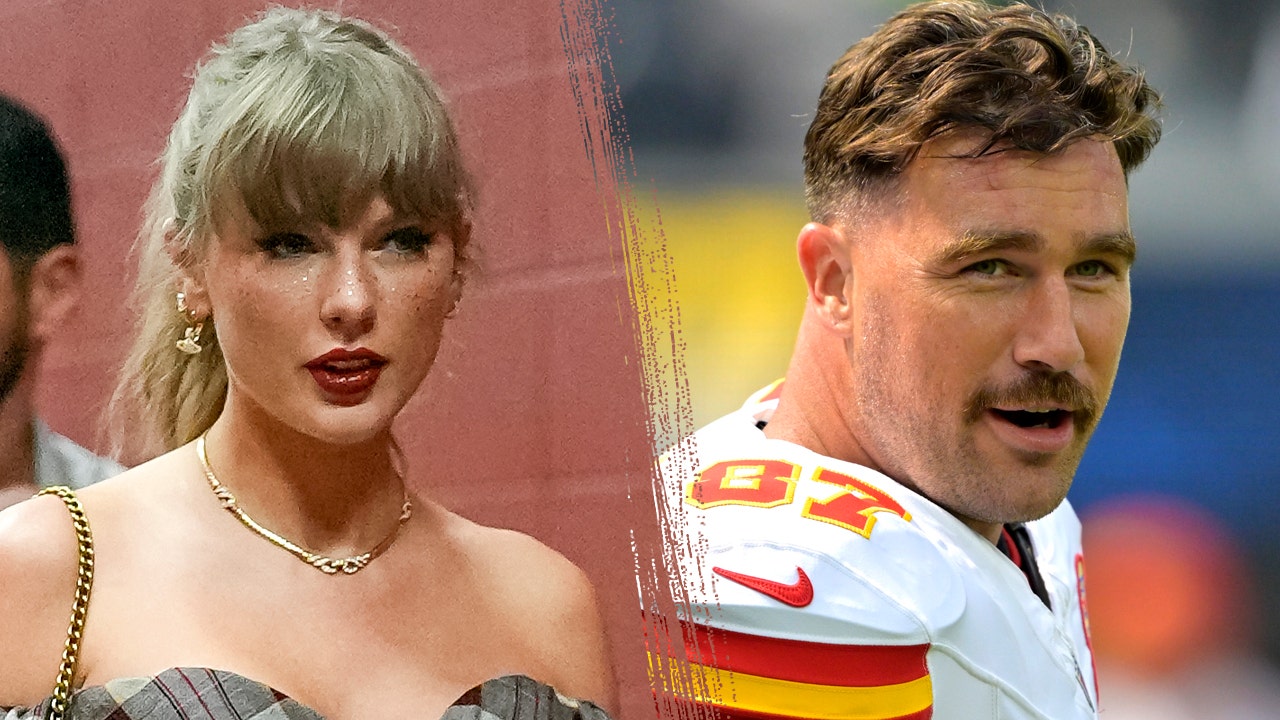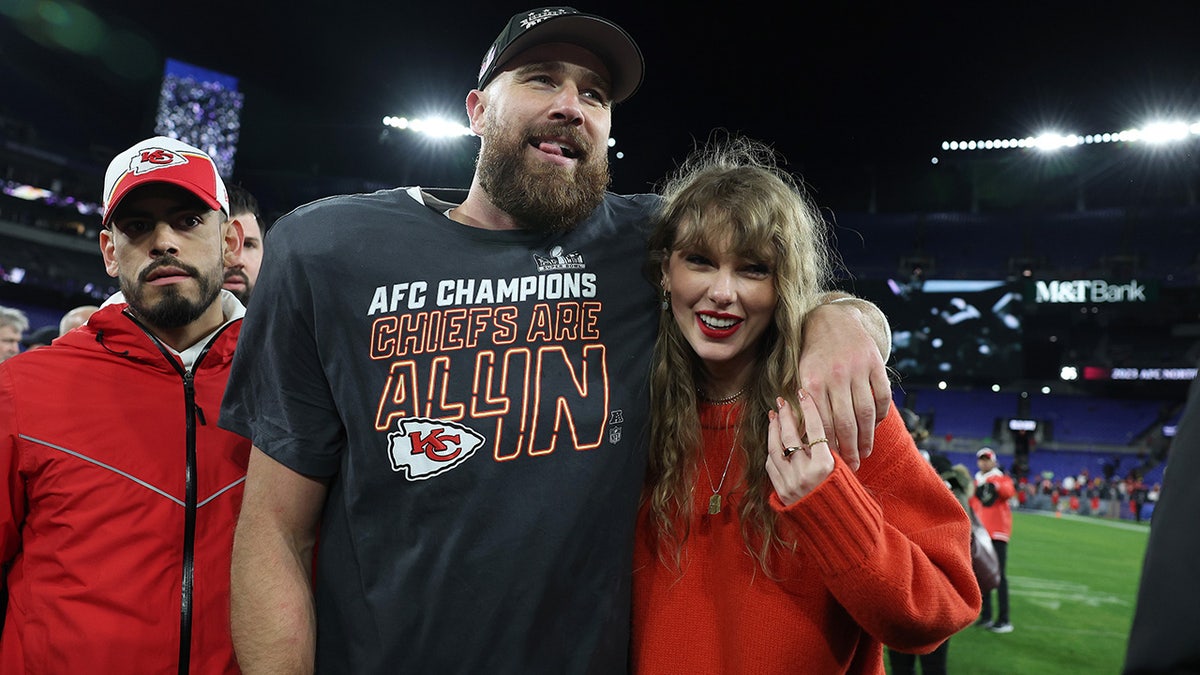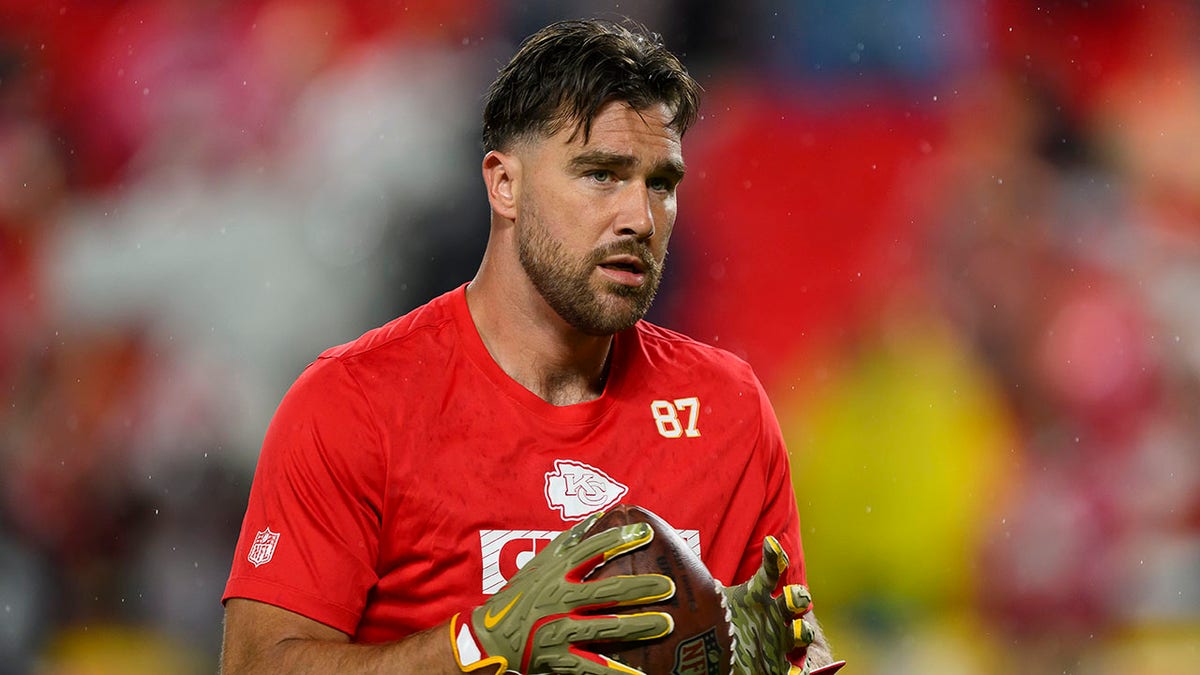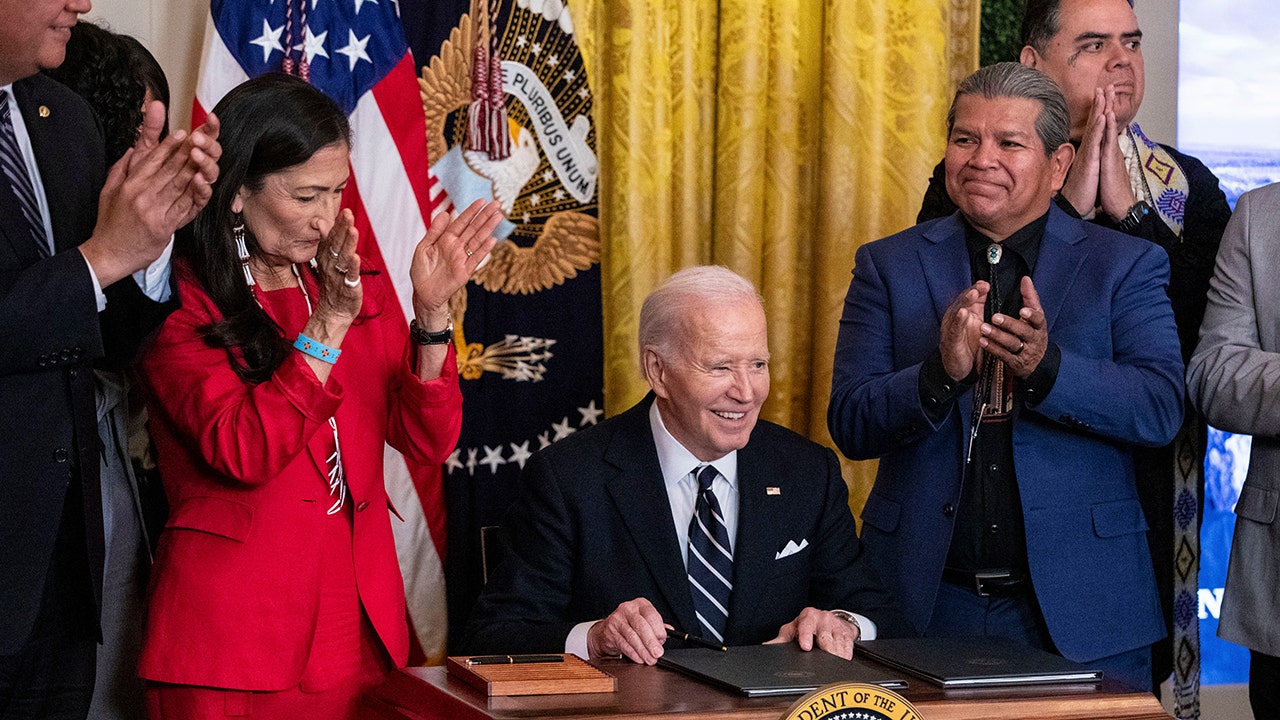Sports
Ali Riley accepts she might have to retire, but she's fighting it with a smile

There’s a line every athlete approaches late in their career. It’s a finish line of sorts, one that separates their prime years from their borrowed-time years.
For some, the line is obvious; as bright and unmistakable as the neon signs lighting the Las Vegas Strip. For others, it’s thin and all but imperceptible. But either way, the challenge is to cross the finish line of your career having given everything you can to your sport while retaining enough of your health, vigor and sanity to enjoy the post-playing days.
Ali Riley fears she is approaching that line. A persistent nerve issue in her left leg, the first major injury of her 15-year career, landed her on Angel City’s season-ending injury list 12 days ago. The injury also kept her out of what would have been her fifth Olympics with New Zealand this summer and limited her to five games and 260 NWSL minutes this season.
Riley will turn 37 the day before Halloween, old for a soccer player but young for just about everybody else. The end is nigh, she knows, but it’s not here yet. So she waits, does hours of mind-numbing rehab in a gym each day and readies for what crossing that the line will mean.
“I will keep trying until the doctor says it is so bad for your health or so bad for your daily life that you should not keep coming back,” she said. “I’m glass half full, I’m a rose-colored glasses [person]. I’m the most positive, optimistic person around. But I still have to be smart.
“I have to be prepared for my future and a life after soccer.”
It’s taken Riley a while to get there. At first she was angry and frustrated with coaches and doctors who wouldn’t let her play. Days after being unexpectedly dropped from the New Zealand Olympic team in France, she cried her way through an appearance at Angel City’s women’s equity summit in Paris.
“In those dark, dark moments when I couldn’t walk, I couldn’t run, I [didn’t] know if I’ll ever be able to play soccer again,” she said later.
That doubt has since been replaced by acceptance.
“When you get to this point,” she said “your perspective has shifted so much.”
If Riley never appears in another game, she’ll retire as one of the most influential and respected players in women’s soccer history. (For what it’s worth, she one of the nicest too.)
A five-time World Cup performer and four-time Olympian, captain of the New Zealand national team for a record 50 games — including the country’s only World Cup victory. She won 11 trophies while playing for eight clubs in five countries and she was instrumental in a campaign to get women private hotel rooms, charter flights and base camps during the last World Cup — perks the men have had for years.
Ali Riley celebrates during a match between New Zealand and Norway at the Women’s World Cup in July 2023.
(Andrew Cornaga / Associated Press)
“Whatever life brings me. I’m prepared and I will take it on with a smile, hiking up all the people around me. Because that’s what I love to do.”
— Ali Riley
“You never want to see a player go on SEI, especially someone who makes as much of an impact on and off the field as Ali,” Angel City coach Becki Tweed said. “When you’re a professional athlete you want to play every minute of every day and when you can’t, it is devastating.
“It can’t be overstated how much Ali means to this team and community, and we are with her every step of the way.”
A Harvard-Westlake grad, Riley returned to help launch a women’s professional team in her hometown in 2022. She’s a certified health coach who last year published a cookbook. She has a Stanford education and she’s had brands deals with ESPN, Nike, Puma and a clothing brand in Sweden, where she once played. She hosted a series on YouTube, gave a talk for Anheuser-Busch, partnered with a sports-nutrition company and in March she became engaged (finally!) to longtime boyfriend Lucas Warrer Nilsson.
She is one of those rare people who can brighten both a locker room and a conference room simply by entering it. And there would be appear to be few mountains — inside or outside the sport — left for her to climb.
So while she may be approaching the end of one career she is also preparing to cross the threshold into another.
“My cup is so full,” she said. “Coming to Angel City, I have my family, I have support, but also I have these other passions, these side hustles. I’m so proud of myself for putting energy into other things that make me happy and taking the time to learn what makes me happy.
“I can speak, and speak publicly, about things that are important to me. That has set me up for this really tough time.”
It’s a tough time not simply because she can’t play soccer; it’s a tough time because the decision is no longer hers to make. Riley has another year left on her contract and she wants to play that season, she wants to help Angel City back to the playoffs. Whether that will happen is now up to her body and after consulting with specialists in two countries, she’s still unclear what she needs to do to convince her body to let her play.
She isn’t even sure how she got the injury although she suspects it happened last November when she landed awkwardly during a training session on a poor field in Colombia.
“Hearing what some of my colleagues in other countries have experienced when they have had soccer taken away from them, I felt a little bit sheepish after being so upset about my nerve injury,” Riley said. “It still sucks to be injured. It sucks not to be able to play; to watch my team every day is hard. I’m super motivated to come back.”
“But,” she added “there are no guarantees in life, especially not in professional sports.”
For Riley, the finish line she is approaching is neither cloaked in neon nor so thin as to be imperceptible. But it is unavoidable and she vows not to trip when she crosses it.
“I want to run the L.A. Marathon. I want to be able to surf. If we have children, I want to be able to pick them up and run after them,” she said. “So that’s No. 1. I don’t want to threaten that.”
“Whatever life brings me,” she continued “I’m prepared and I will take it on with a smile, hiking up all the people around me. Because that’s what I love to do.”
⚽ You have read the latest installment of On Soccer with Kevin Baxter. The weekly column takes you behind the scenes and shines a spotlight on unique stories. Listen to Baxter on this week’s episode of the “Corner of the Galaxy” podcast.

Sports
With Mike Vrabel and Drake Maye, Patriots have one of NFL’s better coach-QB pairings

FOXBORO, Mass. — Mike Vrabel has a plan for Drake Maye. For the young quarterback, who’s coming off a promising rookie season, it’s less about specific footwork and not really — at least yet — about reads, processing or mechanics.
Vrabel, officially now the head coach of the New England Patriots, has been around enough quarterbacks to know what success at that position should look and sound like. And that’s where he thinks he can most help the 22-year-old Maye.
“Drake is going to be his own person, but I’m going to give him some things that I feel like are necessary to help us win football games,” Vrabel said during his introductory news conference Monday.
Left unsaid during the pomp of Vrabel’s big day is what his presence next to Maye solidifies. Even if the Patriots have plenty of other issues that require fixing, they believe they have their coach and quarterback for years to come, the most important pairing in professional sports. They haven’t had that since at least Mac Jones’ rookie season (with Bill Belichick) in 2021, perhaps since Tom Brady had a locker at Gillette Stadium.
In a league that’s all about the head coach and quarterback, it’s OK that the Patriots’ to-do list is long and difficult. Nothing really matters until you have the right coach and quarterback. Now the Patriots feel they have both.
GO DEEPER
Mike Vrabel isn’t selling any Patriots glory. He’s playing defense against it
There’s a long way to go for both Vrabel and Maye to make this work the way the Patriots envision, but it’s also fair to note there are probably not too many other coach-quarterback pairs you’d no doubt take over Vrabel and Maye for the next five years. That’s not to anoint them the second coming of Belichick and Brady. But it’s the one reason that amid so many other issues, there’s a lot of optimism right now in New England.
“Put great people around him,” Vrabel said of his plan for Maye. “I would say that my involvement will be as it relates to game management and situational awareness and where we are on the football field and trying to develop him as a leader of the offense. When a quarterback calls the play, you want to say it like everybody’s going to believe that it’s going to score a touchdown — like with that type of emphasis on how everything is going to operate.”
Mike Vrabel on developing @DrakeMaye2 and the Patriots offense. pic.twitter.com/k3gisgBG97
— New England Patriots (@Patriots) January 13, 2025
It sounds wild given how bad the Patriots have been the last few years and the state of the roster, but there probably aren’t many pairings more promising over the next five years than Vrabel and Maye. The Chiefs, Bengals, Bills, Ravens, Chargers and 49ers have solid arguments for a better pairing. But the Patriots could be in the next tier with the Texans, Eagles and Lions.
Perhaps one of the slights on the duo could be that Vrabel’s passing offenses with the Titans never put up gaudy numbers. During their 11-win season in 2020, they ranked 23rd in passing yards. When they won 12 games the next year, they ranked 25th. But that would ignore their efficiency. In those two years, they ranked third and sixth in passing success rate.
For his part, Vrabel tried to put to rest the concerns that he’s always had run-first offenses, which doesn’t seem ideal for a promising young quarterback.
“We have to be a very efficient passing football team,” Vrabel said. “When you look at statistically what wins in the National Football League, our ability to affect the other team’s quarterback and our ability to provide for an efficient quarterback and passing game is a high contributor to success.”
Of course, Maye’s development is going to be largely pinned on whomever Vrabel picks as his offensive coordinator.
Vrabel said that decision isn’t close to being made yet and that the Patriots will do a full search to fill out their coaching staff.

GO DEEPER
New Patriots coach Mike Vrabel will have his pick of offensive and defensive coordinators
“That’s far from solidified,” he said. “We want to put the best, (most) talented coaches in front of our players. … I want the players to embrace what every coach is teaching. I will tell you this, as long as I’m the head coach here, our coaches will have three simple jobs — and they sound simple, but they’re probably not as simple as we want to make them be. They want to teach, they want to develop and they want to inspire our players by making a connection.”
On this day, a celebratory one in front of a slew of microphones and cameras, Vrabel seemed to have all the right details and answers down to the three tasks for his assistant coaches.
On Day 1, he brought stability and respectability to a franchise badly in need of it. And in the process, he’s paired now with Maye to give the Patriots assurances at the two most important spots in building an NFL team.
(Photos: Eric Canha and Mark J. Rebilas / Imagn Images)
Sports
Chiefs' Travis Kelce responds to NFL postseason-related question with Taylor Swift lyric

The Kansas City Chiefs’ quest for an unprecedented third consecutive Vince Lombardi Trophy begins in earnest on Saturday when they welcome the Houston Texans to Arrowhead Stadium for a playoff game.
The Texans upset the Los Angeles Chargers in the wild-card round over the weekend, which punched their ticket to the divisional round. Travis Kelce, 35, has been in the NFL for more than a decade, but the Chiefs star tight end told ESPN’s Pat McAfee he still feels like he has the energy of a young athlete.
Kelce actually mentioned a specific number — 22 — when he was asked about how he felt as the Chiefs head into the playoffs. “22” is also the title of one of pop star Taylor Swift’s songs from her album “Red.”
Taylor Swift and Travis Kelce in a split photo. (IMAGN)
“I don’t know about you, but I’m feeling 22,” he said in a nod to one of the song’s lyrics this week during an appearance on “The Pat McAfee Show” this week.
Kelce and Swift have been romantically linked for more than a year, with the singer making routine appearances at Chiefs games since the 2023 season.

Taylor looked lucky in love as she supported Travis Kelce following his big win at the AFC Championship game. (Patrick Smith)
Kelce was recently named to his 10th consecutive Pro Bowl. But, he likely hopes to skip the event and in favor of competing in the Super Bowl in New Orleans.
TRAVIS KELCE RECEIVES MOST FAN VOTES FOR 2025 PRO BOWL
Although Kelce fell short of the coveted 1,000 receiving yards mark this past regular season, he appeared to round into playoff form as the year progressed.

Kansas City Chiefs tight end Travis Kelce after making a catch during warmups before an NFL football game against the Tampa Bay Buccaneers, Nov. 4, 2024, in Kansas City, Mo. (AP Photo/Reed Hoffmann, File)
He finished the Chiefs’ Christmas Day victory over the Pittsburgh Steelers with 84 receiving yards and a touchdown reception.
Kelce has been a key part of three Super Bowl winning teams, including the Chiefs win over the Philadelphia Eagles in Super Bowl LVII and last year’s title run. No NFL team has ever won three consecutive Super Bowl titles.
Follow Fox News Digital’s sports coverage on X, and subscribe to the Fox News Sports Huddle newsletter.
Sports
Rams to have 'sense of urgency' in slowing Saquon Barkley, Eagles

It was an embarrassing defeat, a night when Philadelphia Eagles running back Saquon Barkley dominated the Rams.
On Nov. 24, Barkley rushed for 255 yards and scored on runs of 70 and 72 yards in a 37-20 victory over the Rams at SoFi Stadium.
The defeat marked a turning point for the Rams.
Coach Sean McVay challenged his players to give their best effort over the final 39 days of the season. The Rams reeled off five consecutive victories before McVay rested starters in a season-ending loss to the Seattle Seahawks.
“When you have humbling experiences, with the right kinds of people, those are where the real growth [opportunities] exist,” McVay said Tuesday during a video conference with reporters, adding, “A lot of the scars that we’ve had as a team have been what led us to the point where we’re at.”
The Rams, coming off a dominating NFC wild-card victory over the Minnesota Vikings, are preparing to face Barkley and the No. 2-seeded Eagles in a divisional-round game on Sunday at Lincoln Financial Field in Philadelphia.
The Eagles advanced by defeating the Green Bay Packers, 22-10, on Sunday.
“They’re real,” McVay said of Eagles, adding, “They’re in this position for a reason.”
The Eagles feature Barkley, quarterback Jalen Hurts, receivers A.J. Brown and DeVonta Smith, tight end Dallas Goedert and, perhaps most importantly, one of the NFL’s best offensive lines.
Vic Fangio coordinates a defense that gave up only one touchdown and intercepted three passes against the Packers.
But Barkley is the biggest star on a team full of them.
The seventh-year pro, in his first season with the Eagles, rushed for 2,005 yards and 13 touchdowns.
Eagles running back Saquon Barkley scores on a 70-yard touchdown against the Rams in the third quarter at SoFi Stadium in Week 12.
(Wally Skalij / Los Angeles Times)
A good chunk came against the Rams.
So how must it be different on Sunday, when the Rams face a running back who rushed for 119 yards in 25 carries against the Packers?
“Our sense of urgency will be appropriate for the task at hand,” McVay said.
The Rams displayed an overwhelming pass rush against the Vikings — they tied an NFL postseason record with nine sacks — but neutralizing Barkley will be the key against the Eagles, Rams players said.
“Stopping Saquon and being able to get to some of the positions we were in tonight,” defensive lineman Braden Fiske said after the victory over the Vikings. “Getting to be able to rush the passer. I mean that’s what we got to do, get them into third and longs and keep them out of third and shorts.”
The Eagles offense, with Barkley and other weapons, “can really do damage at any time,” safety Quentin Lake said.
“We’re going to come up with a good game plan to make sure that we can limit the explosive plays,” Lake said. “Obviously, limit Saquon Barkley because we know how dangerous he is. And somehow, some way, find our opportunities to make plays on the ball.
“And if we do those things, we’ll have a good chance of winning.”
Etc.
Rams tight end Tyler Higbee, who suffered a chest injury against the Vikings, was released from the hospital and returned to Los Angeles on Monday night with the team. McVay said Higbee was taken to the hospital after spitting up blood. McVay had no other update but Higbee “has full expectation that he’ll be ready to go” on Sunday, McVay said. McVay had no update on cornerback Ahkello Witherspoon (hamstring). … Having left fire-ravaged Los Angeles for Arizona to prepare for their wild-card game, McVay said the Rams planned to remain in Southern California before leaving for Philadelphia on Saturday. “I’m very hopeful that we’ll be able to be here this week,” he said, adding, “All of our expectations for the time being are that we’re going to be able to have our preparation here.”
-

 Health1 week ago
Health1 week agoOzempic ‘microdosing’ is the new weight-loss trend: Should you try it?
-
/cdn.vox-cdn.com/uploads/chorus_asset/file/25822586/STK169_ZUCKERBERG_MAGA_STKS491_CVIRGINIA_A.jpg)
/cdn.vox-cdn.com/uploads/chorus_asset/file/25822586/STK169_ZUCKERBERG_MAGA_STKS491_CVIRGINIA_A.jpg) Technology6 days ago
Technology6 days agoMeta is highlighting a splintering global approach to online speech
-

 Science3 days ago
Science3 days agoMetro will offer free rides in L.A. through Sunday due to fires
-
/cdn.vox-cdn.com/uploads/chorus_asset/file/25821992/videoframe_720397.png)
/cdn.vox-cdn.com/uploads/chorus_asset/file/25821992/videoframe_720397.png) Technology1 week ago
Technology1 week agoLas Vegas police release ChatGPT logs from the suspect in the Cybertruck explosion
-

 Movie Reviews1 week ago
Movie Reviews1 week ago‘How to Make Millions Before Grandma Dies’ Review: Thai Oscar Entry Is a Disarmingly Sentimental Tear-Jerker
-

 Health1 week ago
Health1 week agoMichael J. Fox honored with Presidential Medal of Freedom for Parkinson’s research efforts
-

 Movie Reviews1 week ago
Movie Reviews1 week agoMovie Review: Millennials try to buy-in or opt-out of the “American Meltdown”
-

 News1 week ago
News1 week agoPhotos: Pacific Palisades Wildfire Engulfs Homes in an L.A. Neighborhood














